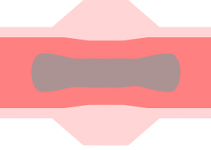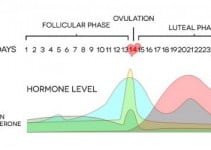Nexplanon is an etonogestrel implant that prevents ovulation, and in turn, prevent pregnancy. While used by women as a form of contraception, it is known to have unfavorable side effects on the menstrual cycle.
What is Nexplanon?
Nexplanon is an implant, usually implanted into the skin of the upper arm, and is used as a form of medicinal contraception that releases the hormone etonogestrel. This hormone effectively prevents the release of an egg from the ovary in order to prevent pregnancy from happening, and is 99% effective.
 Nexplanon can also cause changes in the cervical mucus and uterine lining, which can make it more difficult for sperm to reach the uterus and decreasing chances of a fertilized egg attaching to the uterus. Nexplanon is implanted and the hormone is released gradually into the body, and it can be used for up to 3 years as contraception in the body.
Nexplanon can also cause changes in the cervical mucus and uterine lining, which can make it more difficult for sperm to reach the uterus and decreasing chances of a fertilized egg attaching to the uterus. Nexplanon is implanted and the hormone is released gradually into the body, and it can be used for up to 3 years as contraception in the body.
The timing of the insertion of nexplanon is important. Nexplanon should be inserted within the first seven days of the menstrual cycle or while on oral contraceptives. You must do a routine pregnancy test before insertion to ensure that you are not pregnant.
MECHANISM OF ACTION
Nexplanon is a single rod contraceptive implant with measurements 40 mm length and 2 mm diameter. It contains 68 mg of etonogestrel which is dispersed in an ethylene vinyl acetate membrane. Nexplanon works by suppressing ovulation in every menstrual cycle for three years.
This mechanism of preventing pregnancy is highly effective because it is a low dose of hormone that is beneficial in preventing the release of an egg from the ovary.
HEALTH BENEFITS OF NEXPLANON
There are many health benefits of Nexplanon as an effective birth control implant. It consists of hormone which facilitates women undergoing certain gynecological or general health conditions who wish to adopt an effective birth control method. Some of the vital health benefits of Nexplanon are as follows:
- Nexplanon – long-lasting birth control
- No stress of mission birth control dosage
- Lighter and comfortable periods
These benefits may vary in women such as light or heavy bleeding due to clinical conditions or being obese.
THINGS TO CONSIDER BEFORE NEXOPLANON IMPLANT
There are several medical conditions in which it is necessary to avoid Nexoplanon Implant. These clinical conditions are as follows:
- Cardiovascular disease
- Chronic Vaginal infection with bleeding
- Heavy menstrual bleeding
- Highly hypertensive
- Cancer and Liver cirrhosis
- Severe migraine attacks
- Smoking and drinking (above 35 years)
- History of cardiac arrest
- History of viral infection like Hepatitis C
Nexplanon as a drug can increase the chances of developing increased blood clots that’s why it is highly recommended to share your clinical history with your health care professional to avoid further complications.
What Are Its Side Effects?
The most common side effects of nexplanon are the ones that affect your menstrual cycle. Nexplanon can cause a change in the pattern of your menstrual bleeding during your period.
Menstrual bleeding patterns may suddenly occur more frequently, with longer or shorter bleeding experienced during your period or no bleeding occurring at all. The time between your menstrual periods may also vary and change, and you may experience some spotting in between periods as well.
For some women, menstrual bleeding might stop altogether. This is also nothing to be concerned about. In this case, the ovaries are resting and abstaining from releasing an egg every month, keeping the uterine lining thin.
There are other common side effects related to your menstrual cycle that you might experience if you use nexplanon. Apart from the changes in menstrual bleeding patterns, nexplanon can cause mood swings, weight gain, headaches, acne, and depression. Nexplanon can, in effect, amplify symptoms of PMS and your menstrual period by making their symptoms worse. You may also experience stomach pain, breast tenderness, and vaginal itching or discharge.
Nexplanon can also cause more painful periods, and affect the reproductive organs as well. Vaginitis is another known side effect that causes the vagina to become inflamed. There is also a chance of ovarian cysts developing, but this may be treated. Women also sometimes experience pain, bruising, or swelling at the site of the insertion. Many women choose to stop using the implant because of these changes. Once the implant is removed, your menstrual cycles should return to the way they were before.
While menstrual changes are relatively common among women using the hormonal implants, every woman’s body operates differently and it’s also perfectly normal to not experience any irregular changes either. Every woman is different, and it all depends on each individual.
So Are There Any Risks?
There is the risk of issues surrounding the insertion of the implant and its removal. If the implant is inserted improperly you may be able to become pregnant. Locating and removing the implant can even be difficult if the implant is not inserted correctly.
It is also advised that if you become pregnant while using nexplanon, there is a higher risk of the pregnancy becoming ectopic as a result. Other than that, experiencing differences in the pattern of your menstrual cycle is normal while using nexplanon, although it is important to keep an eye on the side effects to watch out for anything that might indicate a possible pregnancy or a serious reaction.
Women shouldn’t go ahead with the nexplanon implant if they are already experiencing abnormal vaginal bleeding. If your menstrual bleeding becomes severely heavy and prolonged, you should seek a doctor’s advice.
References:
- Mommers, E., Blum, G. F., Gent, T. G., Peters, K. P., Sørdal, T. S., & Marintcheva-Petrova, M. (2012). Nexplanon, a radiopaque etonogestrel implant in combination with a next-generation applicator: 3-year results of a noncomparative multicenter trial. American journal of obstetrics and gynecology, 207(5), 388-e1.
- Praet, C., & D’Oca, K. (2014). Cost-benefit model of varying Nexplanon and other long-acting reversible contraceptive (LARC) methods uptake compared to the oral contraceptive pill: UK perspective. Value Health, 17, A508.
- Chevreau, J., Krief, D., Arab, O. A., Zitoun, M., Foulon, A., Sergent, F., & Gondry, J. (2018). Factors associated with removal difficulties of etonogestrel-containing contraceptive implants (Nexplanon®). European Journal of Obstetrics & Gynecology and Reproductive Biology, 224, 81-84.
- Braun-Courville, D. K., & Romano, M. E. (2016). Patterns of Contraceptive Implant Use in a General Adolescent Medicine Clinic Population. Journal of Adolescent Health, 58(2), S79.
- Romano, M. E., & Braun-Corville, D. K. (2016). Patterns of Contraceptive Implant Use in a General Adolescent Medicine Clinic. Journal of Pediatric and Adolescent Gynecology, 29(2), 171.
- Dewitt, J. D., Ahmad, N., Hoffman, S. M., & Edmonds, B. T. (2018). Understanding Long-acting Reversible Contraceptive Decision-making in the Immediate Postpartum Period [10g]. Obstetrics & Gynecology, 131, 77S.
Partridge, R., & Bush, J. (2013). Infections post-Nexplanon® insertion. J Fam Plann Reprod Health Care, 39(4), 309-310.




I got my implant on 6/26/19 and was doing depo since December 2nd, today is really painful. I never cramped when I had a full period, I’m having extreme pain in my stomach, I know its not that I have to poo, eating does nothing, I had a fever, now I don’t, but its getting more intense, I don’t know if this is a cramp or not, in 7 days I turn 15, but I’m confused and in a lot of pain
Hi Alex, congrats for staying protected at such a young age. It’s quite possible that you might be having a reaction to the depo and your body doesn’t really enjoy it. Give it another month or so for your body to get used to the depo and if the cramping doesn’t get better talk to your doctor about a different method of birth control.
Hi, i am 21 years old and have had the implant for about 1.5 years. My periods have been very inconsistent and my mood has been up and wayyyy down. I feel like the implant is allowing me to become pregnant and then causing miscarriages early in. I had a few tests have a faint line show up about 30 mins after taking a test and then I’d start my period very heavily and negative. Has anyone had this problem? I don’t have insurance to change birth controls :'(
Hi Kailey, IN all honesty it could be the implant itself that is causing the mood swings. The implant is not causing you to become pregnant and then miscarrying. That’s not how the implant works. As far as the pregnancy test, if you are waiting 30 minutes to look at it that is most likely an evaporation line which is normal. They are only reliable to read within the first three to five minutes. After that the chance that it’s an evaporation line, and not an actual positive, is most likely the reasoning. If you don’t have insurance, go to a local planned parenthood. They will do payments based on income and if your income is low enough you could be eligible to change birth controls for free. Good luck.
Hi, I just got my implant removed September 26, 2018. We weren’t careful the few days till I got on my birth control pills that Sunday. I’m afraid I’ll end up pregnant but I’m mostly worried about if I do I will miscarry. I’ve heard about so many people miscarry weeks after getting pregnant after taking it out. And so many good healthy pregnancies. Actually, my sister’s friend got it taken out at the end of November last year and 5 days later she was prego. And she had a healthy baby and pregnancy she was `17. I’m scared to death. I don’t wanna lose my baby if i have one. I’m only 18. PLEASE HELP!!!
Hi Victoria, it is possible to get pregnant relatively quickly when coming off the implant. We can’t tell you that you are guaranteed to have a miscarriage or anything of the sorts, that completely up to your body. With that being said, if you hadn’t ovulated yet it’s possible that the birth control will prevent it. Just know there are a lot of people who have been on birth control and become pregnant with no adverse reaction.
Hello! I’ve had my nexplanon in for 6 months and i was having periods every 2 weeks and they would last inconcistent amount of days . a week ago my nipples started to hurt and I became constipated , but haven’t had any bleeding. I see this Normal or could I be pregnant?
Hello Alex, take a pregnancy test 7 days after a missed period to confirm pregnancy.
I got my nexplanon removed about 6 weeks ago because my husband and I wish to conceive. I was bleeding off and on for about 2months prior to the removal, but have not had a period yet. How long should it take for my cycle to return?
Hello Ashley, your period might take up until 3 months to return.